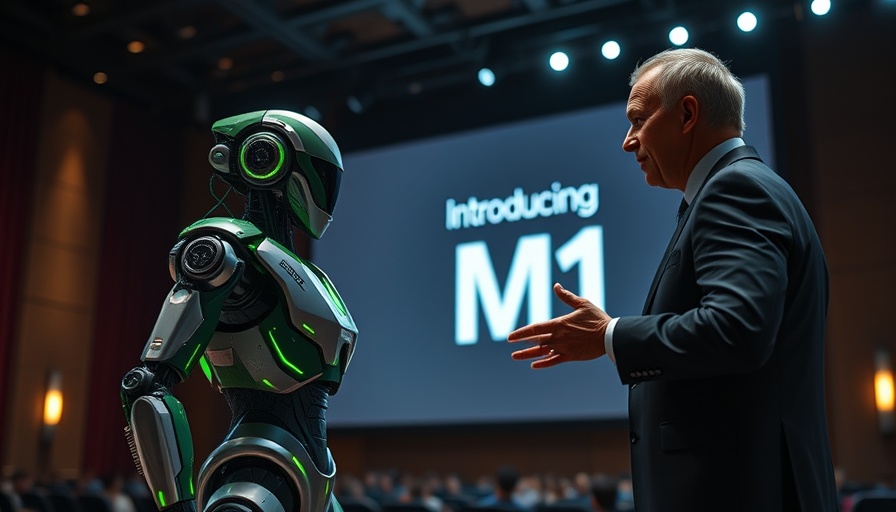
The Revolutionary Impact of M1 on AI Development
In recent months, the landscape of artificial intelligence has been dramatically reshaped by the introduction of Miniax's M1, a groundbreaking open-source AI model that boasts an impressive million-token capability. This capability allows M1 to understand and generate responses that can encompass entire book series without breaking a sweat, challenging even the most advanced models in the sector. Better yet, it all comes without the constraints of paywalls or vendor locks typical of proprietary systems.
In 'M1: New Open-Source AI Model From China SHOCKS The Industry', the discussion dives into how M1 redefines artificial intelligence by setting new standards for efficiency and usability.
How Does M1 Stand Out in Today's AI Market?
Unlike traditional AI models that often rely on fixed parameters and convoluted architectures, M1’s novel approach utilizes a mixture of experts that activates only a subset of parameters to handle tasks efficiently. While most models like OpenAI's GPT-4 struggle with high operations cost, M1's design ensures a much more economical computation, fundamentally changing how AI can be trained and deployed across various applications.
The Technical Genius Behind M1's Design
At the heart of M1’s significance is its unique reinforcement learning algorithm known as CISPO (Clipped Importance Sampling Policy Optimization). CISPO allows the model to maintain creativity, avoiding the pitfalls of traditional approaches that suppress less frequent yet crucial tokens. This ideation reflects a philosophical shift in training methodology, emphasizing not just accuracy but the nuanced reasoning that AI must engage in to be genuinely effective.
Contextual Understanding
Its Role in Performance and User Engagement
When we consider the applications of AI in fields like content generation and coding, contextual understanding becomes paramount. M1's ability to handle substantial inputs with clarity enables it to generate detailed and nuanced outputs effectively. As a benchmark, M1 performs astoundingly well on the MRCR benchmark, boasting scores that are competitive within the market, especially against known giants like DeepSeek.
Future Predictions: What Lies Ahead for Open-Source AI?
The advent of M1 marks potentially groundbreaking shifts in not only the performance of AI models but also the cost structures involved in creating these advanced systems. With efficient training methodologies, we may see an increase in the proliferation of open-source AI applications that were previously infeasible due to resource constraints. This could democratize AI technology and level the playing field across industries.
Real-World Applications: A Look Beyond the Code
Considering practical implementation, the implications of M1 extend throughout business sectors, enhancing everything from customer service chatbots to complex automation in the software development lifecycle. Companies can leverage its capabilities without the fear of data privacy issues, as the permissive licensing allows on-premises deployment, a significant advantage for organizations with stringent data policies.
Conclusion: Embracing Disruption in AI Technologies
As we delve deeper into AI advancements, M1 serves as a vital testament to the potential of open-source innovations. By removing traditional barriers such as exorbitant costs and access issues, it opens a world of possibilities for developers and companies alike. The ongoing evolution of AI models like M1 invites industry stakeholders and enthusiasts to rethink strategies, engage deeply with emerging technologies, and champion a future where AI is accessible, efficient, and powerful. For those intrigued by the evolving AI landscape, exploring the functionalities of M1 offers a unique opportunity to engage with the future of technology.
 Add Row
Add Row  Add
Add 




Write A Comment